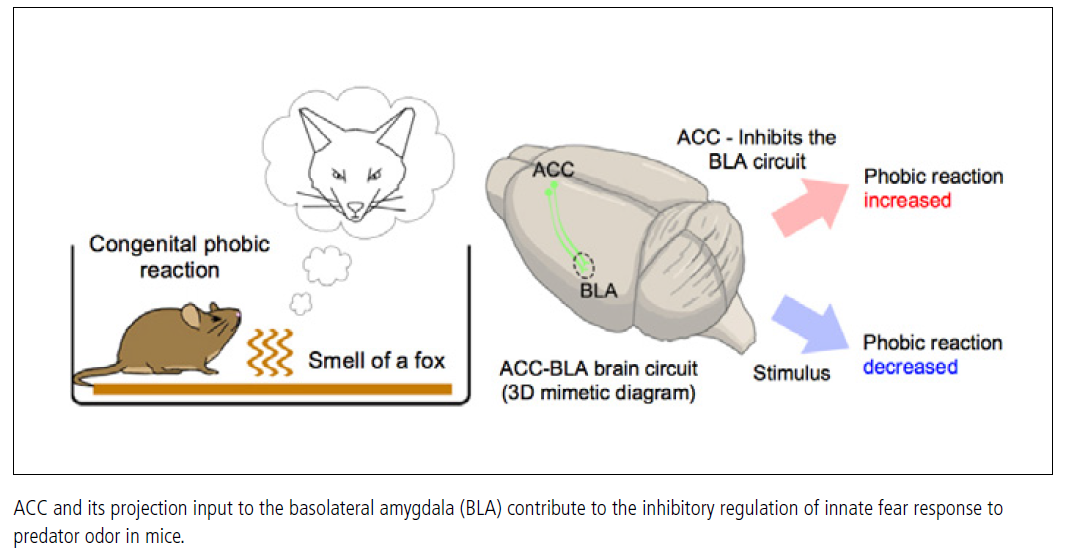Investigation of a prefrontal-amygdala neural circuit that determines innate fear response

Becoming frozen stiff with fear when someone pops up out of nowhere while walking on the street is something everyone has experienced at one time or another. When confronted with a predator or a dangerous object, a fear reaction can play a role in increasing the likelihood of surviving a threat. In other words, normal fear and anxiety reactions are essential functions for the survival of humans and animals. However, the present study paid the attention to the hidden side of the neural circuit that controls the fear response, and found the circuit that caused a congenital behavioral response to fear and discovered its principle.
A fear reaction that varies according to the stimulus
The behavioral response to fearful stimulus varies depending on whether the person is congenitally sensitive to fear, is frightened easily or not frightened easily, or the person’s internal state. The fear response to the same stimulus is different for everyone. In other words, the fear response is not consistent, even though the degree of stimulus is the same. The present study is even more necessary in a society where social anxiety and fear are increasing. The research team began experiments with innate fear response rather than learned fear, and this new way of thinking brought out results with remarkable data. In research with mice using optogenetics-based nerve cell and neural circuit control technology, the team found a prefrontal-amygdala neural circuit that determined innate fear reactions to the threatening sensory stimulus of the smell of a predator.
Expected effects of the development of treatments for brain diseases
The research team of Professor Jin-Hee Han investigated the anterior cingulate cortex (ACC) circuit that controlled the behavioral reactions towards fear, which were determined congenitally, in the research on innate fear response of mice to the smell of a predator. The team found that the ACC neural circuit that projects into the basolateral nucleus of the amygdala (BLA), which was well-known as an important brain structure in the output of fear responses, had a function of inhibiting fear reactions to the smell of a predator. The present study is very meaningful academically because it found the key neural circuit in the brain that coded the congenital fear behavioral reactions to a threatening stimulus. It is expected to be used to develop treatments for anxiety- and fear-related brain diseases such as panic disorder and post-traumatic stress disorder, targeting the anterior cingulate cortex neural circuit. This was joint research with Dr. Hyeong-Ju Park in the Korea Brain Research Institute funded by the Ministry of Science and ICT.
Prof. Jin-Hee Han
2018 KI Annual Report
